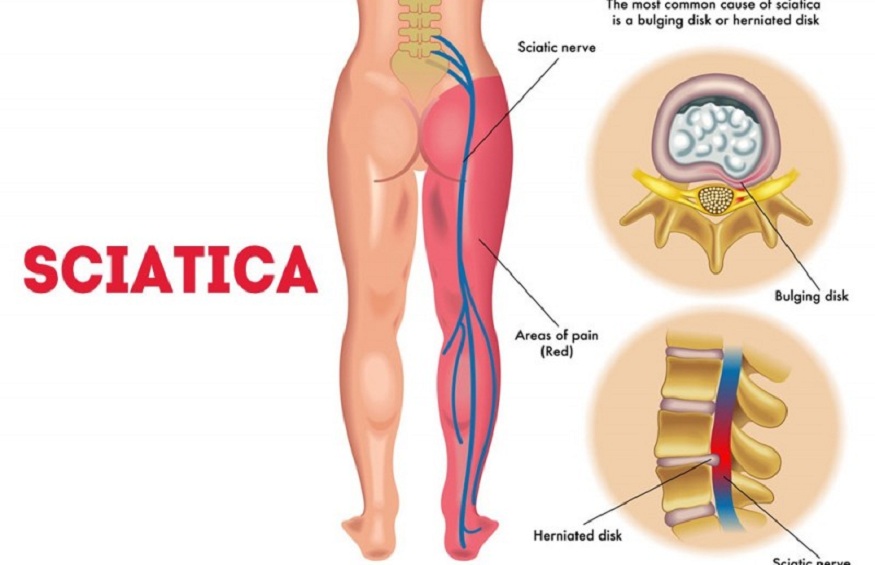What is sciatica and most common causes of sciatica?

Sciatica, which occurs due to the sciatic nerve’s irritation, is very painful and can last for several days, eventually disabling the patient. Learn to prevent its appearance and reduce its discomfort.
It is called sciatica to irritate the sciatic nerve causing sitting the patient pain in the lower part of the back, a pain that extends to the back of one of the legs, and can reach the foot’s tip sometimes. Sometimes the irritated nerve is not precisely the sciatic nerve, and the pain affects the side or front of the leg. Still, the name sciatica or sciatica attack is often kept in popular parlance.
It is one of the most frequent causes of medical consultation and absence from work among middle-aged men. The pain can last for several days and incapacitates the person suffering from it.
Irritation of the sciatic nerve occurs when it is compressed by anybody that is in its path. This nerve’s roots originate from the spinal cord, exit through the vertebrae, and fuse to form the nerve, which is as wide as a finger (it is the largest nerve in the human body). From there, it goes down to the leg behind the buttocks, the thigh, and the knee, innervating all the muscles it encounters along the way and the skin on its way until it reaches the outer edge of the foot.
The most common causes of sciatica are:
Vertebral disc herniation: It is by far the most common cause of sciatica. The vertebral discs are located between the vertebrae and cushion the friction between them due to movements, making the spine flexible. Its interior is viscous, and, over time, it can protrude (move) out of the disc itself into the spinal cord, where it compresses the roots of the sciatic nerve on one side. The herniated disc usually occurs in adult males who perform work where load weight is also common in overweight men.
Fractures: logically, any fracture of the bones located in the sciatic nerve’s path can alter its path and compress it. However, the first concern in these cases will be the fracture itself.
Tumors: They can compress the sciatic nerve by growing uncontrollably. The most common tumor-causing sciatica is chondrosarcoma in the elderly. Fortunately, it is not very frequent. Sciatica can also be caused by a pancreatic tumor that invades the spinal column or due to vertebral metastases, although it is more frequent that they only cause low back pain.
Paget’s disease: This disease does not show symptoms often, but it is more widespread than is thought among the elderly. It consists of the formation of bone in an uncontrolled way without becoming a tumor. The pelvis is the most affected bone and grows little by little, compressing the sciatic nerve.
Pregnancy: During pregnancy, the uterus compresses the internal organs of the pelvis, and this causes muscle contractures that promote sciatica.







